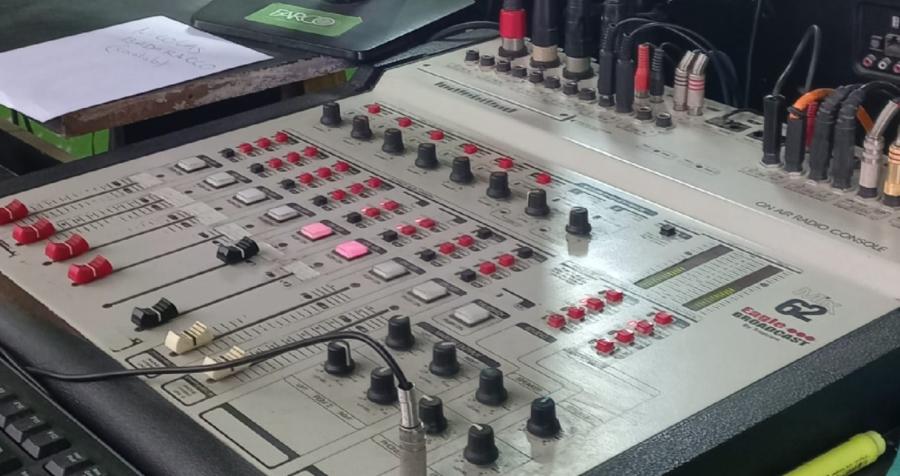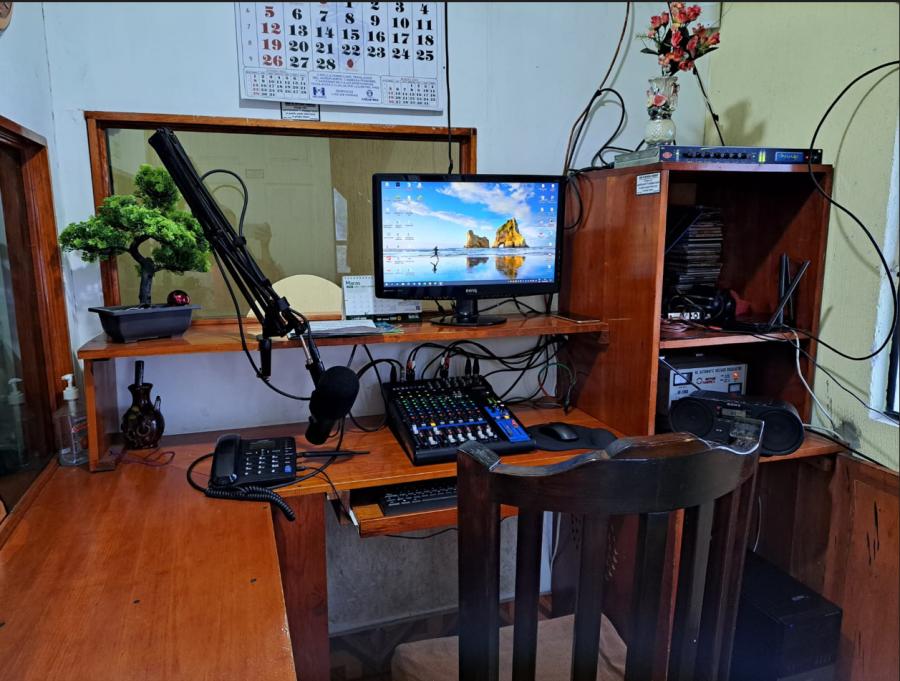
Radio Tuklik serves five communities in the municipalities of Mayapan, Cantamayec, and Tahdziú, located adjacent to each other in the south and east regions of the Yucatan, Mexico. The state of Yucatan consists of 106 municipalities across 7 regions: west, northwest, center, central coast, northeast, east, and south.
The three municipalities served by community radio station, Radio Tuklik, are classified as Indigenous, marginalized, and impoverished. According to the 2020 census, Cantamayec has a total population of 2,755, of which 1,332 are women and 2,001 speak an Indigenous language. The municipality has a poverty rate of 67 percent.
Mayapán’s population is 3,965, of which 1,896 are women, and 3,426 report speaking an Indigenous language. Thirty-nine percent of its population lives in poverty. The population of Tahdziú is 5,854, of which 2,845 are women and 5,160 speak an Indigenous language. This municipality has a poverty rate of 53 percent, with 3,028 people counted as extremely food insecure.
The municipal authorities have shown little interest in solving the problems in this region; rather than proposing solutions, they seek to maintain inequality. They consistently act against the best interest of the communities, which is reflected in the people’s prevailing attitude of distrust.
Origins of Radio Tuklik
As a result of the rampant inequality in this region, Radio Tuklik was conceived by a group of young people from the central and southern regions of the Yucatan in 2015 as an alternative to talk about the problems in their communities. The communities have much in common, with the youth from the three adjacent municipalities attending the same high school.
With the support of Educación Cultura y Ecología A.C., community members organized workshops to learn how to create radio content. Later, the Ko'one'ex Tuklik Muul Kuxtal Collective became involved in radio production and management activities. Now both the youth network and the Ko'one'ex Collective are pillars of the radio station.
Currently, Ko’one’ex and the youth network preside over the planning and implementation of Radio Tuklik’s communication programs. Their motto for the production process is "learning by doing, reflection, and action," and activities and workshops are developed with clear objectives to achieve tangible results.
In January 2018, the first live radio program was broadcast in the town of Timul, Tahdziú. Programs were produced and broadcast through speakers and a 10-watt FM transmitter. A live production and broadcast schedule was made on Saturdays, and the team would travel to one of six communities.
Today, there is a 150-watt transmitter located in Tahdziú, which broadcasts every Saturday from 10:00 am to 1:00 pm. In Cholul, radio is produced and broadcast every other Saturday from 3:00 pm to 5:00 pm. In the communities of Cantamayec, Mayapán, and Timul, the programs are broadcast live on loudspeakers; in Tahdziú and Cholul, they are rebroadcast.
Radio Tuklik aims to communicate with and inform the Maya-speaking population, strengthening their intergenerational connection, Mayan identity, and language while promoting the exchange of ideas for the advancement and well being of the population. Topics addressed in the programs have included youth issues, gender equity, violence prevention, activities to promote the growth of milpas, community memory, and the promotion of talents in the region. Radio Tuklik serves as a bridge between the generations as well as citizens and the authorities. The station is run entirely by Maya-speaking volunteers, both youth and adults.
A step forward with the support of Cultural Survival

During the construction of the programming schedule involving all the communities.
In late 2021, Radio Tuklik received a grant from Cultural Survival to strengthen the radio station. As programs are produced in different communities, not just one, this was a great opportunity to build community ties. The activities developed through the grant were the design and implementation of workshops, for which a survey was prepared and conducted to determine what areas were of interest to the community. The results of the survey were analyzed to determine which capacities to strengthen within the community.
The programming schedule is made up of proposals from five communities based on the results of the community survey and on community radio’s goals to educate, entertain, and inform. The topics that were proposed include sexuality, women's rights and violence prevention, stories and histories of the region, care of the environment, good agricultural practices, youth, and current events.
Participants in the workshops commented: "It is of great importance to communicate responsibly and above all to try to teach other young people;" "I never thought that these topics would be of concern to the community;" "What I liked most was learning how to search for audio that helps improve productions;" and, "I never thought I would learn about radio!”
Since the proposals were issued, work continues on the planning and production of programs for broadcasting on an FM signal. A workshop was held on how to assemble the transmitter and antenna. Participants were excited about this topic and had high expectations since there is a great interest to learn technical skills among both men and women. The participants were introduced to a world of technology that felt unfamiliar but were pleased to learn about and work with the materials and devices needed to assemble and activate the equipment.
The workshop had an important result: participants became skilled at using the technology, something that was previously uncommon for these communities, and perhaps had even been unthinkable for women. Some of the participants commented, "I never thought of using a drill and a welding machine," and "I never thought we would be able to build an antenna."
Another element that the workshop addressed was point-to-point communication, which refers to sending and receiving data remotely over a distance of anywhere from 500 meters to 80 kilometers, at a frequency of either 2.4 Ghz or 5.8 Ghz. The participants were able to enter the world of telecommunications, learning about the devices and platforms used to identify the requirements for point-to-point linking, such as calculating the height of the transmitter towers based on the distance between one point to another.
This activity helped participants to get to know the world of communication networks from another angle, i.e., from the experience of the user, rather than the administrator, and more importantly, motivated and inspired communities that previously did not even have telephones to become connected.
In recent workshops sponsored by Cultural Survival, experts shared their knowledge and experiences, creating opportunities for others to learn from them. A survey was conducted to develop a programming schedule by learning the preferences of the residents and thematic areas of interest. The results of the survey are also a baseline to assess the degree of progress made over the next year.
Since receiving these trainings, the community was able to understand how radio works. Having a transmitter with a greater range allows the radio station to reach more residents in real time, and not on delay. All these developments have fostered greater interest in the community in being part of the radio station as both listeners and producers. For the network of youth and the Ko'one'ex Tuklik Collective, this project is a stepping stone to our dream of connectivity. Communication is not easy in our situation, but we forge on with great enthusiasm to be able to bring information to the communities through the use of the Maya language of Yucatan.
In 2021, Radio Tuklik received a grant from Cultural Survival’s Indigenous Community Fund, which provides opportunities for international Indigenous radio stations to strengthen their infrastructure and broadcast systems and creates training opportunities for journalism, broadcasting, audio editing, technical skills, and more for radio journalists from Indigenous communities around the world. In 2022, the Indigenous Community Media Fund supported communities with 23 grants totaling $138,000 to Indigenous community media outlets from 13 countries.
Top photo: Cover photo: In the workshop explaining the functions of the transmitter.



